Your Cart is Empty
FREE SHIPPING ON ORDERS $79+ IN THE CONTINENTAL US
FREE SHIPPING ON ORDERS $79+ IN THE CONTINENTAL US
Explore

A Cheat Sheet to Better Health: Prebiotics, Probiotics, and Postbiotics
July 10, 2020 4 min read
A few years ago,probiotics was a buzz word for health websites, magazines, and anyone looking to better their gut health. It wasn't long before you could find this essential nutrient in a variety of food products like supplements, yogurt, granola, protein powders, baking mixes, and much more.
Some time after that, researchers discovered thatprebiotics were essential for a healthier gut and there was an explosion of food items that featured this “good” bacteria.
For a while, the proper combination of probiotics and prebiotics appeared to be the key to a healthier gut, healthier diet, and a healthier body in general. Then, along camepostbiotics.
There's plenty to learn about these compounds and how they play a part in the body's overall well-being. But how many biotics can we keep track of? It might feel a little overwhelming to absorb all of this new information about your health.
How can you use prebiotics, probiotics, and postbiotics to your advantage? Luckily, we've put together a cheat sheet of sorts to help you out.
A Little Tip
Before we get started, here’s a little tip to help you better understand the roles these bacterias play in your body: Pretend like these biotics are a factory.
Prebiotics are what go in; they're the raw materials. Probiotics are the factory itself where the raw materials are taken and turned into a final product. Postbiotics are the final product.
Prebiotics
The easiest way to think about prebiotics is to consider them food for probiotics. More technically, they are nutrients or non-digestible substrates that probiotics use in our gut and benefit our bodies.
Most people think prebiotics are fiber and nothing more, but resistant starches and polyphenolic compounds also fit under the prebiotic umbrella. Resistant starches cannot be broken down and absorbed by the body, while polyphenolic compounds are natural compounds commonly found in plants.
Gut bugs break down specific prebiotics, which produces molecules that are beneficial to the gut. Additionally, prebiotics tend to be anti-inflammatory and help the gut absorb minerals like magnesium and calcium.
So, what food items are good sources of prebiotics? They tend to be found in foods that we don't eat frequently. Green bananas, chicory root, tiger nuts, and dandelion greens are all great sources of prebiotics but they may not be the most appetizing.
If you're looking for items that fit into your diet better, you're in luck! Onions, garlic, lentils, asparagus, whole grains, and artichokes are all great prebiotic sources. If you want to increase your intake of resistant starches, try cooking your potatoes and letting them cool overnight.
Don't just focus on one or two sources of prebiotics. To better feed the probiotics in your gut, it's best to consume a wider variety of prebiotics.
Probiotics
Now we're onto the "factory" stage of things. This analogy is apt because, once probiotics make it to the gut, they immediately start processing prebiotics and converting them into postbiotics. Probiotics are actually live bacteria that have the power to produce health benefits.
They're frequently labeled as "good" bacteria - which they typically are - but they're not always beneficial for all people or disease states. For example, immunocompromised people and anyone undergoing cancer treatment should avoid them.
The best proof of probiotics' value is for anyone with diarrhea or diarrhea caused by antibiotics. Taking probiotics can shorten the duration of diarrhea by an entire day.
Diarrhea isn't the only way probiotics can be helpful. Probiotics can also treat or even prevent a bevy of other conditions, like gastrointestinal issues, skin conditions, high blood pressure, high cholesterol, allergies, and more.
Probiotics also help with inflammation, benefit the immune system, and even keep the gut ecosystem balanced.
So, what are some good sources of probiotics? Kefir is great because it features a range of bacterias that can survive in the stomach and make it to the gut. Sauerkraut, kimchi, and kombucha are also great for your gut health, though they might not have many additional health benefits.
Postbiotics
Postbiotics aren't very well known, especially in comparison to prebiotics and probiotics. Postbiotics are what you get when probiotics ferment prebiotics in your gut. The byproducts of this process include short-chain fatty acids, enzymes, and peptides.
Though prebiotics and probiotics get a lot of attention, postbiotics are what actually benefit the health of your gut. For example, a fiber-rich diet will lead to more butyrate in the gut, which helps with inflammation in the brain and gut.
Evidence also suggests that short-chain fatty acids benefit immunity, insulin sensitivity, and glucose metabolism. These fatty acids can also help prevent tumors.
However, research on postbiotics is still quite new and there's still plenty to learn about their benefits. Though you can eat butyrate, it tastes horrible. If you're interested in providing your gut with much-needed postbiotics, the easiest route is to consume prebiotic-rich foods.
Supplement Your Diet
So, now that you know everything you need to know about prebiotics, probiotics, and postbiotics, what’s the best way to ensure your gut gets what it needs?
We covered good sources of prebiotics and probiotics above - all of which are great options - but there’s an even easier solution:Pineapple Chia Cleanse from Smart Pressed Juice.
This unique blend of 15 superfood fibers acts as your daily mini-cleanse to combat bloating and keep your food cravings under control. Plus, this cleanse is packed with activated prebiotic fiber and gut-balancing probiotics and other nutritious enzymes.
If you’re serious about your gut health, you’ll lovePineapple Chia Cleanse.
For more SMART lifestyle tips like this, visitwww.smartpressedjuice.com and follow us onInstagram andTwitter, or like us onFacebook. You can also visit ourAmazon store to stock up on our delicious juices.
Statements made on this website have not been evaluated by the U.S. Food and Drug Administration. Information provided by this website or this company is not a substitute for direct, individual medical treatment or advice. It is the responsibility of you and your healthcare providers to make all decisions regarding your health. We recommend that you consult with your healthcare providers regarding the diagnosis and treatment of any disease or condition. Products sold on this website are not intended to diagnose, treat, cure, or prevent any disease.

